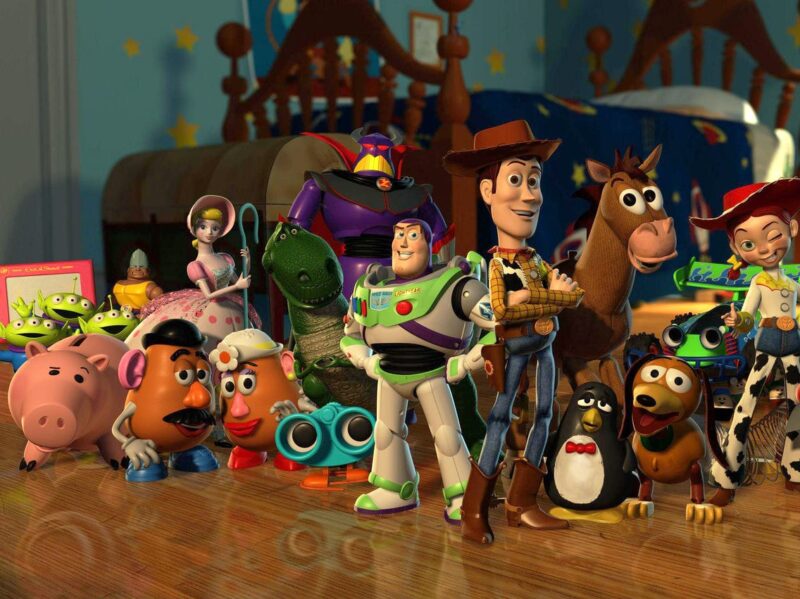How Animated Classics Like Toy Story Changed Film Technology in the 90s
November 12, 2024

In the 1990s, animation saw a renaissance that completely transformed the film industry. At the forefront of this revolution was Pixar Animation Studios’ groundbreaking film, Toy Story, released in 1995. As the first entirely computer-animated feature film, Toy Story not only captivated audiences worldwide but also redefined what was possible in animation, paving the way for a new era of storytelling in cinema.
1. The Birth of Computer Animation
Before 1995, animated films primarily relied on traditional hand-drawn techniques, a labor-intensive process that required immense artistry and tolerance for meticulous detail. Films like Disney’s The Lion King (1994) showcased stunning animation, but the introduction of computer-generated imagery (CGI) revolutionized the field.
Computer animation allowed filmmakers to create visually stunning, three-dimensional characters and environments that were not easily achievable with traditional methods. With Toy Story, Pixar showcased the full potential of CGI, captivating audiences with its rich visuals and the emotional depth of its characters. The film involved advanced techniques, including wireframe rendering and texture mapping, demonstrating the immense possibilities of computer technology.
2. Character Development and Storytelling
Toy Story’s impact extended beyond mere visuals—it redefined storytelling in animation. Pixar understood that to connect with audiences, characters needed depth and relatability. Woody and Buzz Lightyear, the film’s protagonists, embodied the theme of friendship and self-discovery, which resonated with both children and adults.
The story arc followed them as they navigated the complexities of their relationship, building emotional stakes that captured the audience’s heart. This approach diverged from previous animated films that often prioritized spectacle over character, demonstrating that animation could deliver profound narratives that engage viewers on an emotional level.
3. Pioneering Technology: Rendering and Animation Software
The creation of Toy Story required powerful computing techniques and innovative software that did not exist before. Pixar developed its own animation software, RenderMan, which enabled artists to render realistic images and scenes more efficiently. RenderMan utilized advanced rendering techniques to simulate light behavior’s intricacies, such as reflections and shadows, the results of which were revolutionary in animated film production.
The integration of motion capture technology also marked a notable shift in animation. Although not fully realized in Toy Story, its success set the stage for further exploration into how blending live-action with animation could create more dynamic films in the years to come.
4. The Rise of CGI in Mainstream Cinema
Following Toy Story’s remarkable success, other studios began to explore CGI for their animated features. Films like DreamWorks’ Shrek (2001) and Disney’s Finding Nemo (2003) utilized CGI to tell stories that were once labeled impossible to animate.
This opened the floodgates for innovation, inspiring filmmakers to reconsider how animation could complement storytelling and style. The industry experienced rapid evolution, as CGI moved from being a novelty to becoming integral to animated storytelling.
The box office success of CGI films demonstrated that audiences craved this new visual experience. The commercial viability of animated features encouraged studios to invest in technology and talent, further advancing animation craft.
5. Cultural Influence: Shaping New Generations
The cultural impact of Toy Story extended beyond the realm of animation technology; it shaped an entire generation’s childhood. The characters became icons, and the film’s quotable dialogue and memorable themes have endured through decades. Toy Story proved that animated films could tackle meaningful subjects like growing up, friendship, and identity—all with humor and warmth.
Moreover, the film demonstrated the viability of sequels, leading to the production of multiple Toy Story films over the following years. Each sequel advanced technology and storytelling techniques, showcasing how innovation could accompany and enhance character development and narrative depth.
6. Lasting Legacy: The Future of Animation
In the years since Toy Story’s release, its influence on the animation industry can’t be overstated. Many of the techniques pioneered in the film became standard practices used in animated films today. Animation studios continue to push boundaries with virtual reality (VR) and augmented reality (AR), allowing audiences to immerse themselves in animated worlds.
Moreover, as technology evolves, so does the storytelling potential of animated films. With innovations such as AI in animation and more sophisticated rendering techniques, the future of animated storytelling appears bright, offering audiences ever-changing experiences.
Conclusion
Toy Story did more than entertain; it marked a pivotal moment in animation and film history. By marrying cutting-edge technology with compelling storytelling, Pixar redefined what animated films could achieve. The legacy of Toy Story continues to be felt in the industry, inspiring animators and filmmakers to explore new technology while still prioritizing the heart of storytelling.
As animation technology advances further, audiences can look forward to witnessing new worlds, characters, and stories that will continue to capture imagination as Toy Story once did. It is indeed a remarkable beginning for computer-generated animated films, forever altering the landscape of cinema, one animated classic at a time.








